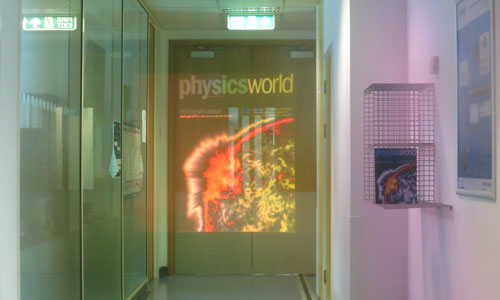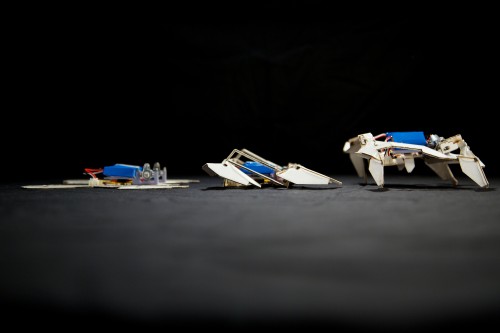Tag archives: science and society
Aliens and atheists
By Margaret Harris
Press releases are supposed to be attention-grabbing, but occasionally, I come across one that really goes the extra mile. That was the case this morning when – my eyes still a bit bleary, my coffee still un-drunk – I spotted a real doozy in my in-box.
“Are the world’s religions ready for ET?” the headline asked.
Some might regard this question as unimportant. Even if you care about the official views of religious groups (and many people – including some religious people – do not), their opinions about life on other planets are surely less relevant to daily life than their guidelines on, say, human morality. After all, if extraterrestrial life does exist, it is an awfully long way away: the nearest star system to ours, Alpha Centauri, is more than four light-years off, and astronomers do not regard it as a good candidate for habitable planets. So, if extraterrestrial life is ever discovered, the Earth’s religions will have plenty of time to get used to it before it causes them any practical problems down at the local synagogue, mosque, temple or church (“Baptismal Ceremony ET: For alien life forms unable to answer for themselves”).
View all posts by this author | View this author's profile
A look back at how the dust fell on BICEP2
By Tushna Commissariat
It’s been five days since the metaphorical dust settled on the apparent “discovery” of the B-mode polarization of the cosmic microwave background that was reported in March. The claim came from the team behind the Background Imaging of Cosmic Extragalactic Polarization (BICEP2) telescope at the South Pole, and much has been said since about what was then hailed as one of the biggest scientific discoveries of the decade.
View all posts by this author | View this author's profile
The secret life of hairdryers, the crackpot conundrum and mesmerizing animations
By Hamish Johnston

Its secret life will be revealed at the Science Museum in London. (Courtesy: Batholith)
If you happen to be in London next Saturday (20 September), the Science Museum is running a workshop called “The field life of electronic objects”. Participants will measure the electromagnetic fields surrounding everyday objects such as hairdryers and hard drives “to produce astonishing light images of these objects’ secret life”. Space is limited, the cost is £10 and you can register online.
One thing that we really struggle with here at physicsworld.com is comments from crackpots. My colleagues and I put a lot of effort into writing and editing articles that we believe will be of general interest to the physics community. There is nothing more soul-destroying than spending hours trying to understand and then explain a tricky piece of research only to see the comments on your article hijacked by someone promoting their own bizarre theory.
The American Physical Society (APS) takes a brave and novel way of dealing with crackpots – it gives them their own sessions at APS conferences. In “The Crackpot Conundrum”, blogger Henry Brown describes the mood at such sessions as depressing, something that I understand based on a session that I sat through. Brown then reviews some of the various ways that physics bloggers deal with crackpots and in a moment of deep introspection suspects that he might be seen by some as a crackpot!
Finally, if you are winding down on a Friday afternoon, you can put yourself in a trance by watching these mesmerizing animations by the Irish physicist David Whyte.
Physics World’s futuristic look

Holographic view: The August 2014 issue of Physics World, seen through the NPL device. (Courtesy: NPL/Richard Stevens)
By Tushna Commissariat
Some of you may remember a news story I wrote last month that looked at a new optical gadget that uses a holographic waveguide to augment reality. The device hopes to transform the wearable-display market – it allows users to overlay full-colour, 3D, high-definition images into their normal line of sight, thereby interacting with their surroundings. The waveguide was developed by UK-based company TruLife Optics, along with researchers from the adaptive-optics group at the National Physical Laboratory (NPL) near London.
Hello Kitty in space, Lord of the Rings physics homework and more

Yi on the day of her launch – 8 April 2008. (Courtesy: NASA)
By Tushna Commissariat
This week, South Korea’s one and only astronaut, 36-year-old Yi So-yeon, has quit her job, thereby signalling the end of the country’s manned space programme for the time being. In 2008 Yi became the first Korean to go into space, when for 11 days she travelled on board a Russian Soyuz spacecraft to the International Space Station, after being chosen through the government-run Korean Astronaut Program. Yi cited personal reasons for quitting, but has been studying for an MBA in the US since 2012. You can read more about her work and reasons for leaving in articles from Australia Network News and abc News.
Rise of the real transformers, a celestial farewell for your furry friend and more

Ready, steady, go: a profile view of the “transformer” robot. (Courtesy: Seth Kroll, Wyss Institute)
By Tushna Commissariat and Michael Banks
While the latest Transformers film hit cinemas in the UK earlier this month, scientists in the US at Harvard University, along with colleagues at the Massachusetts Institute of Technology, have developed the very first “real life” transformer: a robot that starts out flat, folds and assembles itself into a complex shape and can then crawl away – all without any human intervention. Indeed, these printed robots can self-fold themselves in about four minutes – a huge improvement on previous models that could take up to two hours. They can even turn and naviagte around, making them a handy and practical tool.
Life after a nuclear bomb, farewell to MetroCosm and the nerdiest thing ever

Observed change in Tatooine surface temperature 100BBY – 10ABY. (Courtesy: David Ng)
By Hamish Johnston
What’s it like to have a nuclear bomb dropped on you? Okay, I know the question is a bit heavy for this light-hearted column but I was really inspired by this piece about Shinji Mikamo who was less than a mile from the epicentre of the Hiroshima bomb. He was 19 at the time and not surprisingly the bomb changed the course of his life in many ways. What I found most amazing is that Mikamo managed to survive an explosion so intense that it blasted off the glass and hands of his father’s pocket watch, but not before imprinting the time of the blast on the watch’s melted face. The article is called “When time stood still” and it appears on the BBC website.
How the banjo got its twang, love in the time of science, award-winning astro images and more

Five string banjo showing the position of the bridge on the round head. (CC BY-SA 3.0 / DMacks)
By Tushna Commissariat and Hamish Johnston
Folk and country music often blends the sharp twang of a banjo with the mellow and sustained tone of a guitar. While the two instruments appear to be very similar – at least at first glance – they have very different sounds. This has long puzzled some physicists, including Nobel laureate David Politzer, who may have just solved this acoustical mystery.
View all posts by this author | View this author's profile
Extraterrestrial espressos, quantum card-games, misunderstood science and more

Mmm…ISSpresso in space. (Courtesy: Lavazza)
By Tushna Commissariat
Most of us can’t get our day started without a fortifying cup of coffee and astronauts are just the same. To help those on the International Space Station meet their caffeine cravings, Italian coffee king Lavazza has designed and built an espresso machine that will work in space! Called “ISSpresso” the machine will be blasted off into space in the possession of astronaut Samantha Cristoforetti, who will also be the first Italian woman in space. You can read all about the ISSpresso and its supreme blends on the Wired website.
Meeting the last man to walk on the Moon

Eugene Cernan speaking at Sheffield Doc/Fest.
By James Dacey, reporting from Sheffield
“I wanted to make a film about an old space cowboy” is how British director Mark Craig introduced his new film on Sunday afternoon here at Sheffield Doc/Fest. The Last Man on the Moon takes a fresh look at the the Apollo era through the story of Eugene Cernan, who was the last person to set foot on the lunar surface when he did so in 1972 as commander of Apollo 17.
The documentary interleaves a profile of “Gene” Cernan with NASA archive footage and special effects, focusing on the personal stories of the astronauts and their families. To give you a flavour, the film opens in the present day with close-ups of Cernan’s facial reactions at a rodeo event as he admires the spectacle and the bravery of the men being thrown around on the back of bulls. Later in the film, Cernan recounts his experiences of being rotated rapidly in space during the Gemini 9A and Apollo 10 missions.
Immediately after the showing, Cernan and Craig stayed for a Q&A session and the audience gave an extended standing ovation as the 80-year-old astronaut walked to the front of the auditorium. I was fortunate to catch up with the pair this morning to get some insights into the inspiration for the film and how it was adapted from the book Cernan co-authored in 1999.
View all posts by this author | View this author's profile